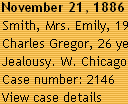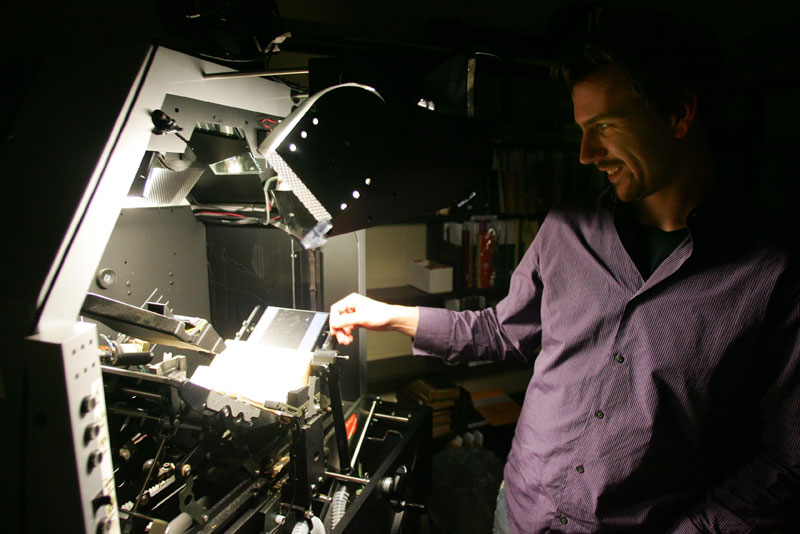This project was a direct outcome of the Homicide in Chicago 1870-1930 project. Although it is focused on an interactive database, much work was done by the Project Director, Leigh Bienen, in gathering publications that could serve as supporting material to contextualize the website. Hull House Maps and Papers - authored by Florence Kelley - was a landmark publication in 1895. It remains in print today and still serves as a stellar example of the progressive ideals of the day and as an exemplary model for social research: the developing social sciences could be harnessed to enlighten the public and motivate political action. The simple, straightforward reporting of facts was more powerful than the most technical legal argument. The more Leigh Bienen delved into Ms. Kelley’s family history and her pathbreaking, relevant body of work, the more fascinated she became. In 2007 the team which created the Historical Homicide project decided to create a new website focused on Florence Kelley’s years in Chicago. 1891-1899, when she lived at Hull House and was the Illinois State Factory Inspector, the first woman to hold such a statewide office. Her life and work was the focus for bringing together an astonishing body of historical materials available in state and university library archives. The official reports from her years as Factory Inspector are available on the website along with many other contemporaneous documents, letters, and legal materials. Florence Kelley, her life and associations in Chicago, have become a lens through which to re-imagine the past. The website is intended to be a resource for students, teachers, historians and any other person with an interest in the history of Chicago or America.
As we began charting an approach to digitizing both her works and others from the early Progressive period, we discovered an article, Digital Books Replace Aging Pages, in the Spring 2007 issue of Northwestern magazine which immediately caught our attention. The article mentioned the purchase of a scanner capable of processing a 300-page book in 30 minutes, and included a thought-provoking quote by Roxanne Sellberg: “We want to move very quickly into scanning not just brittle books but many other books that we think should be available online.” Now we are in the midst of a highly controversial scramble by Google, Amazon and most major universities to digitize vast collections of both contemporary and historic material. As this continues, a balance is sought between the desire to disseminate knowledge and to protect intellectual copyright [see video]. Two things became clear in our initial meetings with the University Library’s Digital Media Services and Archives units:
- High-speed scanning would allow a completely different sort of web project – one in which we could dig deep into the vaults of written work on Chicago to resuscitate health department records chronicling the spread of smallpox in Chicago’s slums during the 1890’s, factory inspection reports, court cases, correspondence, and articles from any of the hundred-plus daily news publications of the time.
Whereas the Homicide web site, on the one hand, consisted of a single interactive dataset and a limited number of books and reports as supporting material, we realized the Florence Kelley site would have a very different form: essentially a supporting web site sitting in front of a huge trove of historical material.
That said, we needed to solve the problem of how to present all this material in a coherent and accessible way. We quickly decided on a goal: because the Homicide dataset allowed the website user to locate an ancestor based on a text search, the Florence Kelley website should achieve the same degree of interactivity. The site must be searchable or for names, addresses, and other verbal identifiers, just as the homicide website data base is searchable. If, for example, one’s great-great aunt had been documented as a sweatshop worker (during one of Florence Kelley’s factory inspections) on page 17 of the 1893 Factory Inspection Report, a person accessing the site should be able to go quickly and directly to that text in the report! Toward this goal, we established the following work flow: (1) acquire the source material, (2) acquire permissions, (3) scan on the high-speed scanner, (4) run optical character recognition (OCR) on the scans, (5) tie the scans, OCR files and metadata together in a document management framework, (6) index the components for search engines, (6) then provide an elegant interface for the end user to access and experience the material.
One of the premier advantages of working in an interdisciplinary environment such as that provided by Northwestern University is the potential for collaboration with exceptional and diverse talents. The Documents Librarian (Pegeen Bassett) and Faculty Services Librarian (Marcia Lehr) under the auspcies of the Northwestern University School of Law and the Northwestern University Library worked with Leigh Bienen and a cadre of students, undergraduates, law students, and graduate students, to gather together the historical material. The University Library Digital Collections had the scanning equipment, image processing software and server architecture for delivering image files. That left the development team with the task of OCR, document management and design. The development team deployed our in-house content management system, MySESP, coupled it with a document management application (built for the My World GIS project), and used the power of Google’s indexing engine to process all the OCR files our research assistant, Peter Hoffmann, patiently processed from the 50,000 pages of scanned material. What we hope you can now enjoy and appreciate is an intuitive, easy-to-use and intensely engaging tool through which to travel back to and engage with documents and materials from an era rich in relevance to the issues we face today: legal advocacy and activism, the rule of law, women’s fights for equality, recognition and rights, the power of the written word, and the way historical issues and people’s approaches to human problems change even as they repeat themselves and remain the same. Truly there is nothing new under the sun in terms of human aspirations, suffering and experience. Most of all we hope you gain appreciation for the monumental work and life of Florence Kelley during this exciting period in Chicago.

